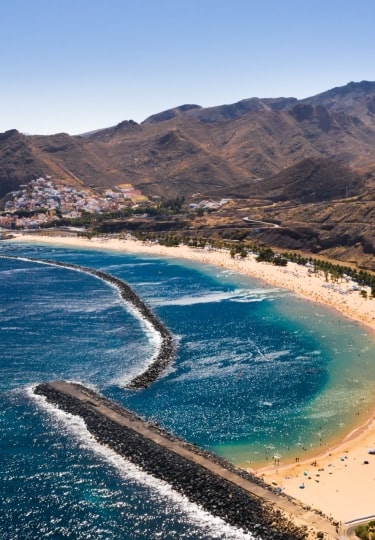The best time to visit the Canary Islands, if you’re looking for winter sun, is between November and February. The archipelago of seven major and multiple minor islands is located off the west coast of Africa, just north of the Tropic of Cancer, and basks in near-constant sunshine. The winter months are slightly cooler, creating ideal conditions for sightseeing and hiking, while the sea is still warm enough for swimming.
Yet the Canary Islands, which belong to Spain, are essentially a year-round destination. Summers are hot and dry but cooled by the trade winds, while winters are warm. As such, there is a large expatriate community here.
The Canary Islands are generally arid; indeed, the dunes of Maspalomas on Gran Canaria and the Timanfaya National Park on Lanzarote could double up as the Sahara Desert. But there are areas of lush, subtropical beauty, too. The north of Tenerife, in the shadow of Mount Teide, Spain’s highest mountain, is verdant and famed for its tropical blooms. The center of Gran Canaria, meanwhile, is covered in dense pine forest.
Visiting the Canary Islands by Season
Summer
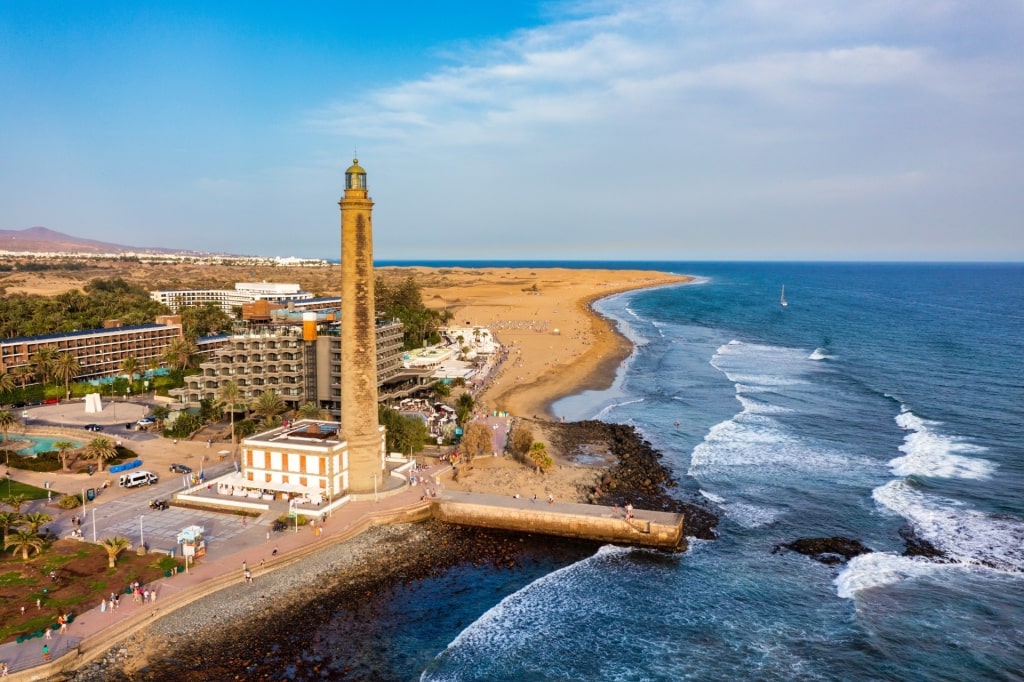
Maspalomas Beach, Gran Canaria
June, July, and August are three of the hottest months of the year, although in comparison to the Mediterranean, temperatures are slightly lower. In August, for example, the average daily temperature in Gran Canaria is 76.8°F (24.9°C). The more arid islands to the east of the archipelago, such as Lanzarote, are slightly hotter.
Typically, there is no rain during the summer months, although humidity can still be high. The sea is warm enough for swimming in summer. In August, expect an average water temperature of 73°F (24°C). Do bear in mind that the islands lie in the Atlantic and are cooled by ocean currents, so the water here will never reach the balmy temperatures of the Mediterranean in midsummer or the Caribbean.
Of course, air temperature decreases with altitude, and if you plan to go up Mount Teide, the top of which is 12,190 feet (3,718 meters) above sea level, you should prepare for much cooler temperatures and strong winds.
Fall
Temperatures remain balmy into the fall in the Canary Islands. Even in November, you can expect a daily average of 70.6°F (21.5°C) and minimal rainfall of just 0.6 inches (15mm). Low-pressure systems can mean that cloud banks form and areas on the northern slopes of mountains, like northern Tenerife, can be subject to fog—but this does not usually last all day.
Early fall, September and October, is arguably the best time to go to the Canary Islands as you can enjoy the still-warm daily temperatures and perfect sea swimming conditions.
Winter
Winter is a busy time in the Canary Islands as this is the closest point to continental Europe for guaranteed winter sunshine. December, January, and February are the wettest months, but this should hardly be a concern, as December, which receives the most rain, only receives an average of 1.2 inches (30mm) of precipitation. Average daily temperatures in January, the coolest month, are 64.7°F (18.2°C), still warm enough for outdoor dining.
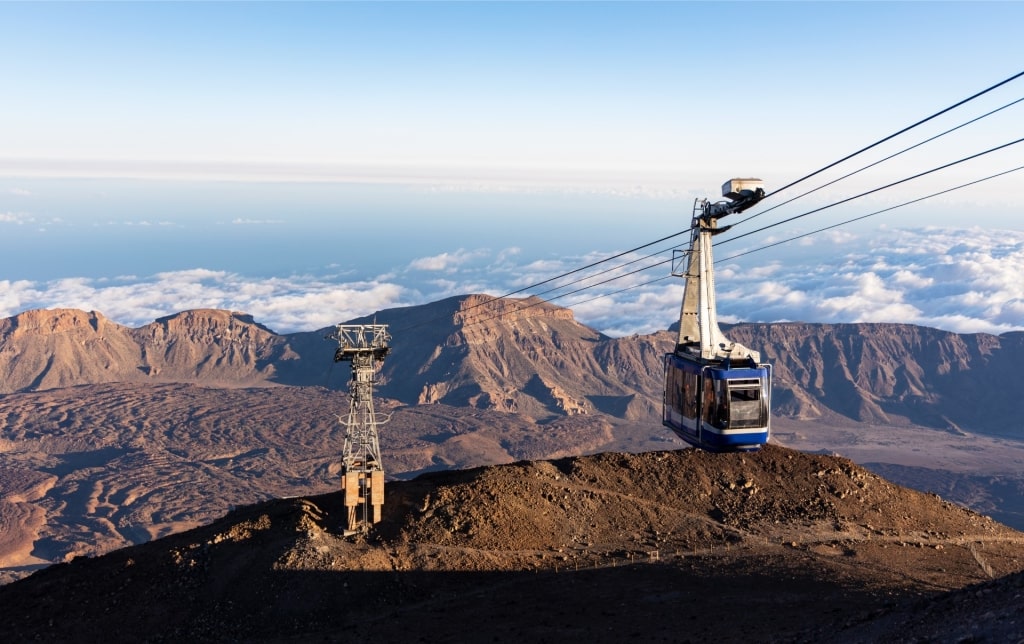
Teide cable car, Tenerife
The Teide cable car runs year-round, subject to weather conditions, but you will need to wrap up warm if you’re going up in winter. The mountain often wears a cap of snow during the winter months and is especially beautiful on a clear day.
Winter is also prime time for whale-watching in the islands, with a good chance of spotting migratory fin, humpback, Sei, and even mighty blue whales in the waters around the islands.
Spring
Spring is a wonderful time to visit the Canary Islands. Early spring is still the almond blossom season in Gran Canaria and Tenerife, while April and May see the wildflowers in bloom, making this the perfect time for hiking.
Temperatures are slowly rising; by May, the daily average is 69.6°F (20.9°C), with highs of 75°F (24.1°C). March still receives a little rain; just 0.4 inches (10mm). By May, there is no rainfall.
When Is Rainy Season?
Winter in the Canary Islands can hardly be called a rainy season, as there’s essentially very little rain, but October to February are statistically the wettest months.
December receives the most rain; in Gran Canaria, expect 1.2 inches (30mm), and slightly less in arid Lanzarote. But these are still great months to visit and the islands are busy with visitors escaping the chilly northern winters.
There are various microclimates in the islands, and La Palma and tiny La Gomera, both of which have a sub-tropical climate, receive more rainfall. As such, they are green and lush, famed for their tropical colors and pristine forests.
When Is High Season?
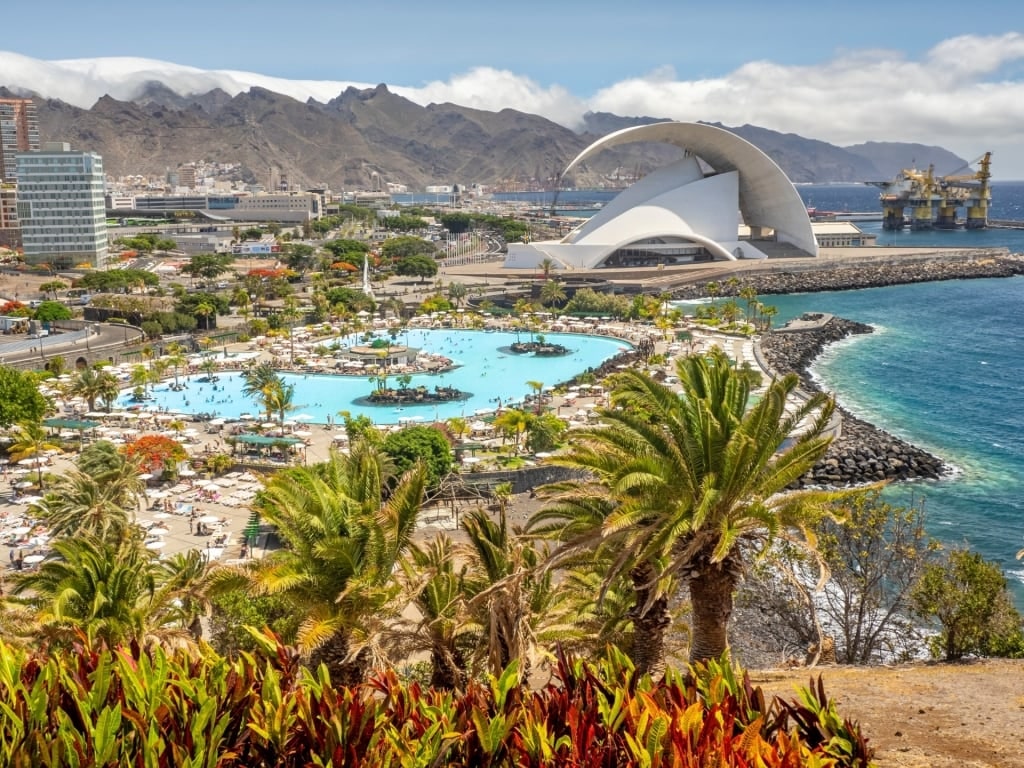
Santa Cruz de Tenerife
True high season in the Canary Islands is the summer months, which is the peak time for beach vacations. But there are highs throughout the year.
Christmas and New Year are always busy, as is Easter, which is an important holiday in Spain. Gran Canaria sees an influx of visitors for its pre-Lenten Carnival, one of the most lavish celebrations of its kind in the world.
When Is Shoulder Season?
Spring and fall are shoulder season in the Canary Islands. Between April (after Easter, if that falls late) and the beginning of the summer rush is a good time to visit, as are late September and October, which coincides with the wine harvest on the six islands that produce wine.
Shoulder season months may receive some rain but are the best time for hiking, cycling, and other outdoorsy things to do in the Canary Islands.
When Is Low Season?
There is no real low season in the Canary Islands, but the quietest months for visitor arrivals are March, when it’s not quite warm enough to sit on the beach, and November, when the days are getting shorter. Having said this, November still sees an average of 6.5 hours of sunshine every day.
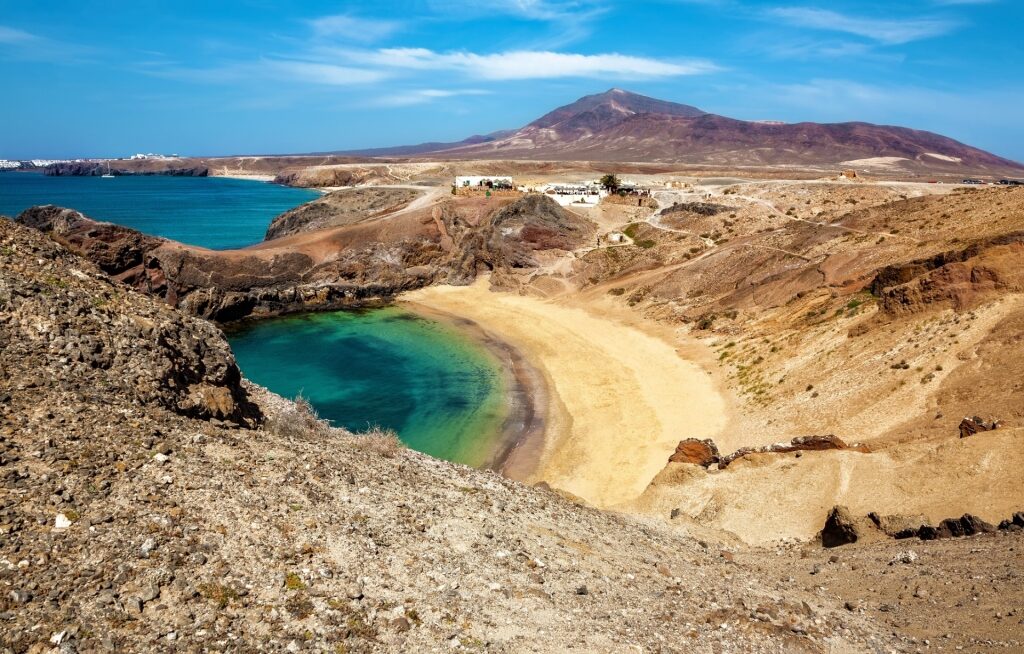
Papagayo Beach, Lanzarote
Discover the beauty of this sub-tropical archipelago for yourself on one of Celebrity’s cruises to the Canary Islands.
